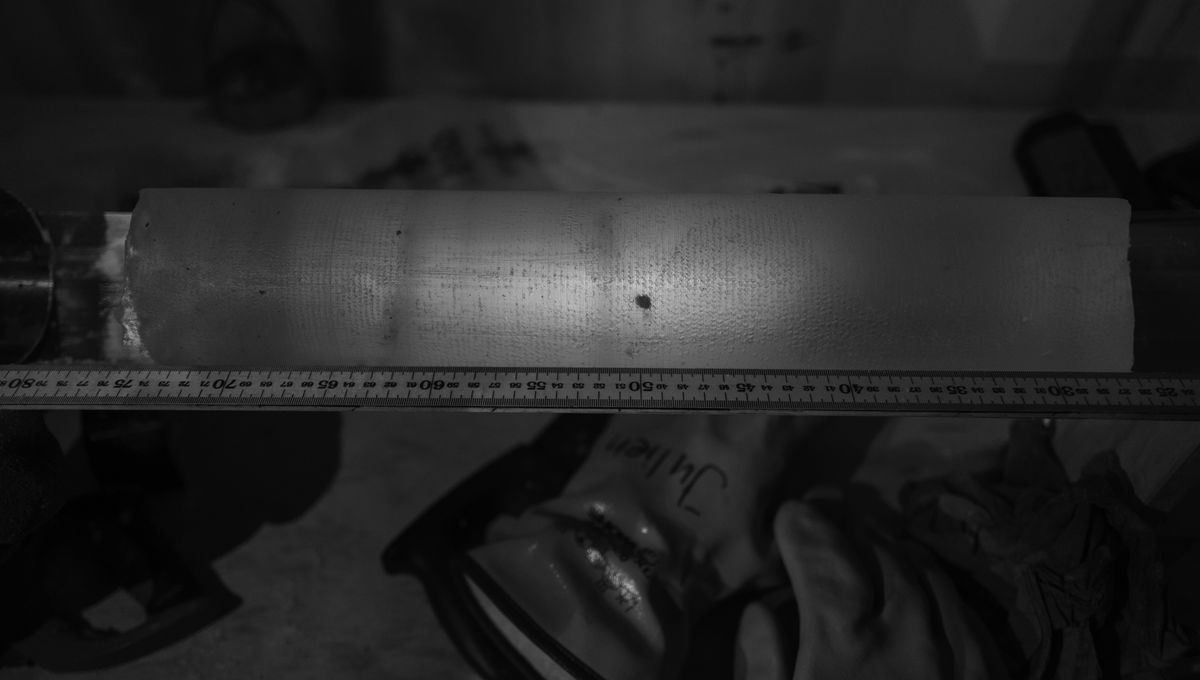
Antarctica’s “oldest ice” has reached the next leg of its journey: a laboratory in Cambridge, England. Here, it is to undergo a detailed analysis later this month, which scientists hope will unravel the mysteries contained within this 1.5-million-year ice sample.
The project is part of an international effort to improve our understanding of the Earth’s climate history – and, therefore, improve predictions of its climate future. Central to this research is a 2,800-meter (9,186-foot) long ice core, drilled at Little Dome C in East Antarctica, which the team intends to decipher in order to reconstruct 1.5 million years’ worth of climate data.
“It’s incredibly exciting to be part of this international effort to unlock the deepest secrets of Antarctica’s ice,” Dr Liz Thomas, Head of the Ice Cores team at the British Antarctic Survey (BAS), said in a statement.
“There is no other place on Earth that retains such a long record of the past atmosphere as Antarctica. It’s our best hope to understand the fundamental drivers of Earth’s climate shifts.”
Until now, the current ice core record was a relatively puny 800,000 years. The new sample will almost double that record. This, Thomas and her fellow researchers hope, will offer answers to the question of why the Earth’s climate cycle experienced a dramatic shift approximately 1.1 million years ago; a shift that ramped up the speed at which the planet cycles between cooler glacial periods and warmer interglacial periods – and may have even threatened our species with extinction.
Advancing our understanding of the Mid-Pleistocene Transition (MPT), which intensified and prolonged glacials (or “ice ages”), could also have the benefit of improving predictions of how greenhouse gas emissions will impact the climate. As Dr Thomas previously told IFLScience, “What the ice cores can do is show us how the planet may change and how it may have reacted in the past.” Adding, “This is what we provide, almost like calibration, for how the planet should behave under normal circumstances. The climate models can then tell us how it may react in the future with all of the non-natural inputs from humans.”
Due to the limitations of previous ice core samples – which are either a little too short or a little too incomplete – paleoclimatologists like Dr Thomas have previously relied upon marine sediment cores to investigate how the Earth’s climate has changed over longer time periods. These along with other natural archives, such as ice cores and the fossils of ancient organisms, combine to build a picture of the planet as it existed over the millennia. Ice cores offer a particularly fascinating glimpse into ancient climate history thanks to the air bubbles trapped inside them, which store evidence of the atmospheric conditions of the time, including temperatures and greenhouse gas concentrations.
“Our data will yield the first continuous reconstructions of key environmental indicators – including atmospheric temperatures, wind patterns, sea ice extent, and marine productivity – spanning the past 1.5 million years,” said Dr Thomas.
“This unprecedented ice core dataset will provide vital insights into the link between atmospheric CO₂ levels and climate during a previously uncharted period in Earth’s history, offering valuable context for predicting future climate change”
Now that the team has accomplished the colossal task of transporting a giant ice cube from Antarctica to Europe, the team will conduct a flow analysis, which will uncover chemical elements, particles and isotopic data by very, very slowly melting the core. The research is being conducted as part of the Beyond EPICA – Oldest Ice project, which includes experts from 10 European countries, and will continue over the next few years at sites across the continent.
Source Link: Process “To Unlock The Deepest Secrets Of Antarctica’s Ice” Begins With 1.5-Million-Year-Old Sample